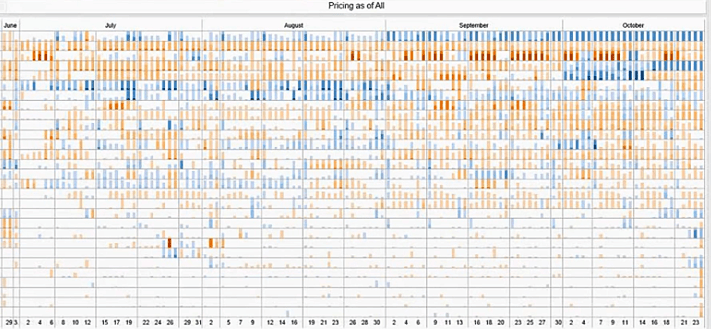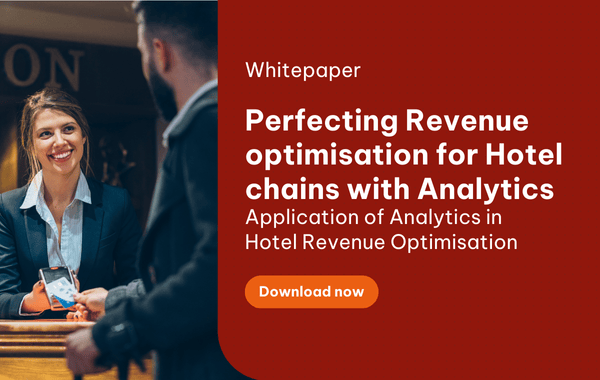The importance of revenue optimisation or revenue management in the hotel industry cannot be overstated due to its critical importance to the Hotel's bottom line. Revenue optimisation is being able to sell the right room to the right guest, at the right price and at the right time. It requires plenty of actionable information on time, which is so often unattainable.

Why your revenue management team needs Analytics
In the absence of a data analytics solution, most revenue optimisation teams would naturally rely on Excel and Access. The problems with this approach are:
- Siloed and out-of-date data: fragmented pieces of data are stored in different places, such as spreadsheets that are manually updated weekly or monthly.
- Limited direct access: only a select few would be able to directly access to all of the data sets.
- Ad-hoc reports: the reporting is based on simple one-off Excel spreadsheets, which also require plenty of resources to update.
Due to those limitations, data analysis is painfully slow. This approach may work, to a certain extent, for one hotel or a small chain of a dozen hotels but is definitely unsustainable for a large chain of hundreds or even thousands of properties.
Read more: 9 Ways to Increase Hotel Profits
Carlson Rezidor Hotel Group is one of the world’s leading hotel companies with more than 1,300 hotels in nearly 100 countries and territories. Its revenue optimisation team used to rely on Excel and Access for analytics and reporting.
The performance was slow and lacklustre. The team spent half of their time pulling and formatting raw data instead of actually analysing it and making actionable recommendations. Subsequently, the team could only provide analysis 2 or 3 times per year for each hotel in the chain. Even worse, the hotels did not find their reports and recommendations useful.
The company then decided to adopt a Business Intelligence solution from Tableau and observed almost immediate results. After the first five weeks, they were able to create 75 different dashboards. And in less than three months, the number of hotels requested weekly reports rose from 0 to 300.
Starwood Hotels and Resorts, which owns, operates and manages nearly 1,300 properties globally, heavily relies on data analytics to optimise room pricing. They even go as far as analysing data on the weather forecast in the US to predict demand for Caribbean trips. The investment in BI is believed to help increase their revenue-per-room by 5 per cent.
Analytics enables hotel chains to make informed decisions based on facts rather than gut feelings and take bigger and more calculated risks. They would be able to anticipate who is going to book, at what rate, for what length of stay, through which channels, and how much in advance.
Analytics in action
How can analytics actually help revenue managers? The following example using a Tableau BI solution will demonstrate the power of analytics in hotel revenue management.
Pricing comparison
The visualisation below helps the revenue managers see where their hotels are priced in comparison to other competitors over a period of 120 days. It combines the actual rates, the competitors’ rates, and the recommended rates which are based on the projected demand data. Each row represents a hotel while each column represents one day in the period.

By looking at this visualisation, revenue managers can swiftly identify which dates and which specific hotels are overpriced or under-priced. A blue bar indicates an overpriced date of a given hotel. An orange bar means an under-priced date. The darker the colour, the more overpriced or under-priced the dates are.
Read more: [Infographic] Hospitality trends to look for in 2017
When information is visualised this way, revenue managers gain insight at a single glance. For example, the hotel in the first row is consistently overpriced. On the other hand, the hotels in the bottom rows have their rates set very close to the recommended rates because there are very few visible bars.
Without the analytics capabilities of a Business Intelligence solution, the revenue managers would have to spend a huge amount of time looking at each hotel individually. And, for each hotel, they would have to go through every single date to identify issues (overpriced dates) or opportunities (under-priced dates).
Do you want to know why and how market-leading hotel chains are applying data analytics to revenue management? Download our white paper below and find out.
 English
English  Vietnamese
Vietnamese 


